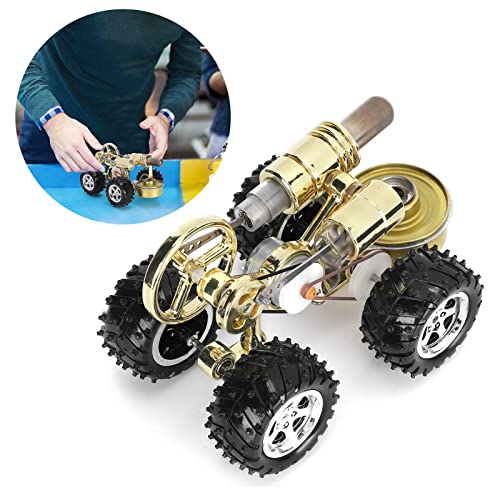Hmmm, so the one you saw online used the exhaust from an axial flow turbine to power a radial in-flow turbine ?
I doubt you will be able to find a single commercial jet engine using a radial in-flow hot section turbine followed by a second hot section turbine either radial or axial.
Certainly low pressure from the single stage compressor is a contributing factor to low fuel efficiency, but it's not the only factor. Another problem comes from compressor and turbine blade operational clearances which are much the same for both RC engines and larger aircraft engines. In a large aircraft engine the required clearance between the rotating blades and the stationary wall is tiny when compared to blade length. However, that same clearance becomes a much larger percentage of overall blade length in the much smaller RC engines.
Another inefficiency suffered by small RC engines is a direct result of the limitations of metallurgy. Even in aircraft jet engines, the vast majority of air moving through the engine is used for cooling purposes and is not a part of the combustion process taking place in the burner. Even the best turbine blades used today cannot survive adiabatic flame temperatures from burning kerosene, therefor, hot combustion gases must be cooled by mixing them with air from the compressor before they impact the turbine blades. Blades used in larger aircraft engines are constructed with internal air channels which route air from the compressor through the inside of the blades and out through tiny holes on the leading edge of each blade, thereby further cooling the blades, buffering them from hot combustion gases. Finally, during the fabrication process, commercial turbine blades are subjected to near melting temperatures in a kiln for several hours and are allowed to cool in such a manor as to force the blade's metal to become a single crystal. Crystals are much more heat resistant than other metal forms and can withstand higher temperatures than castings or worked metal.
All of these additional processes allow commercial engines to operate at much higher TITs than RC engines. (TIT = Turbine Inlet Temperature), and in the jet engine world, higher TITs result in greater efficiency. At the time I stopped working in the gas turbine industry (40 years ago), I knew that both GE and Garrett were testing all-ceramic turbine blades in pursuit of higher TITs,...I don't know how successful they were.
RC engines do not use these advanced manufacturing processes or internal blade cooling designs, and therefore must run at lower TITs, resulting in lower efficiency.
I think you'll find that the advantages of higher temperatures in the Bryton cycle are more than offset by the substantially higher gas pressures found in the Rankine cycle. Compressor outlet pressure in gas turbine engines almost never exceed about 300 psi compared to 3000 psi found in many steam turbines. Higher pressure means higher mass flow through the turbine, resulting in greater power density and greater efficiency.
I have no interest in doing a math comparison between Bryton and Rankine cycles. For me, it's not a question of which one is the most efficient, but rather a question of which engine can I actually build in my DIY shop.









![DreamPlan Home Design and Landscaping Software Free for Windows [PC Download]](https://m.media-amazon.com/images/I/51kvZH2dVLL._SL500_.jpg)


![MeshMagic 3D Free 3D Modeling Software [Download]](https://m.media-amazon.com/images/I/B1U+p8ewjGS._SL500_.png)



















































